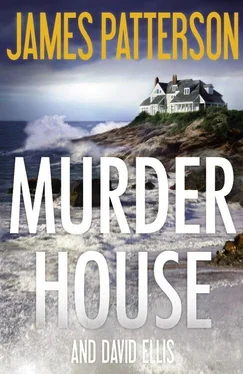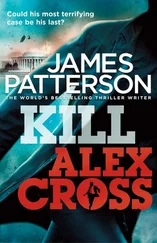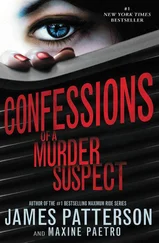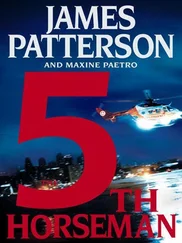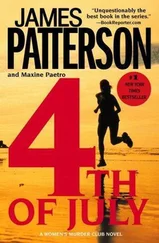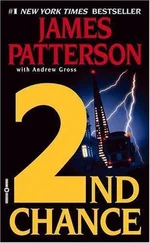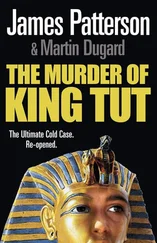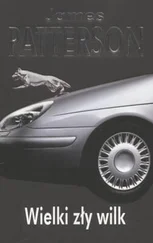The last page doesn’t contain photos. It contains two news clippings, one of them a vertical column, the other merely a headline and photo. Old articles, each of them, faded, with the crispy texture of aged newspaper.
The vertical column, stapled to the album page, has this headline:
Hit-and-Run Kills BH Woman
They’re talking about Aiden’s mother. Gloria Willis, age thirty, of Bridgehampton, pronounced dead at Southampton Hospital after being hit by a car on Sugar Hill Road the previous night. The article claims she had several priors for prostitution and drug possession. Her blood analysis revealed the presence of narcotics and alcohol in her system at the time of her death.
The article is cut out of the bottom quarter of a newspaper page, so there’s no date. But it can’t be that hard to find out when Aiden’s mother died.
Gloria Willis was a drug addict and a prostitute?
Holden VI liked prostitutes. It seemed to be a family trait, in fact.
The other news clipping isn’t even an article. It’s a photo, likewise ripped from the center of the newspaper and thus undated. The photo shows Uncle Lang, in his chief’s uniform, holding a child swaddled in blankets.
Beneath it, this caption:
Newborn Abandoned at Police Station
Southampton Town Police Chief Langdon James holds a newborn child, left abandoned at the entrance to the Bridgehampton substation last night. The infant will be turned over to the Suffolk County Division of Child Protective Services.
What does this all mean? Is this abandoned child Aiden? No. No, of course not. There are photographs of Gloria and Aiden in the hospital at birth.
The baby bump. The second child.
I close the photo album and leave the bedroom. In the kitchen, there is a door that could possibly be a door to a pantry, but my money says it’s a door to the basement.
The basement with those wax figures, arranged perfectly, like a family portrait.
It’s time I got a better look at them.
I open the basement door, flip on the switch, and head downstairs.
The basement is unfinished, with an aging washer and dryer, an unused sink.
I walk toward the back of the basement, the part I saw through the open window last time. But this time, the lights are on.
The creepy wax figures, the Norman Rockwell setting around a coffee table, the faux fireplace.
On the love seat, the wax figure of the man, in a tweed coat, hair greased back, beady eyes, looking a lot like the man in the photo album.
In the rocking chair, the woman, seated and wearing a shawl over her shoulders — a dead ringer for Aiden’s mother.
A third chair, empty. For Aiden?
For Aiden to sit down here and play “let’s pretend” with his family?
Weird. Creepy.
Sad, actually.
I get a closer look at the woman and see, for the first time, something I didn’t notice when I was shining a flashlight in here from the backyard.
On the floor, next to the woman’s chair.
A tiny toy crib, for an infant.
Not a wax figure this time, just a doll — a naked doll, a tiny, bald newborn, swaddled in blankets.
A newborn.
Trying to connect it now.
Aiden at the cemetery, urinating on the tombstone of Holden VI.
Holden VI, the man notorious for frequenting prostitutes.
Gloria Willis, a prostitute — in that photo, pregnant with a second child.
The caption from that photograph in the paper: NEWBORN ABANDONED AT POLICE STATION.
“Shit,” I mumble. “That’s it.”
Gloria Willis had two children. Aiden first, then a child she gave up at birth, abandoned anonymously at the police station.
And why would she abandon her son at the police station anonymously?
Because she didn’t want him? Because she didn’t want a child whose father was a monster? Because she didn’t want the father to ruin the son?
I don’t know. There are still some questions.
But at last, finally, I might have a few answers.
Aiden Willis had a brother. Or more accurately, a half brother.
Whose biological father was Holden Dahlquist VI.
And somehow, in some way, that abandoned boy found his way back into dear old Dad’s life.
Book VI
Bridgehampton, 1993–94
Tonight it will be the beach. Sometimes it’s a park, sometimes one of the taverns as it’s closing and drunk patrons are stumbling out. The beach is always the best. Because there’s always someone there, and they’re asleep, unaware — easy prey.
His trombone case feels heavy. The boy alternates hands as he carries it along Ocean Drive toward the Atlantic, the beach, just past two in the morning.
The wind coming sharply off the ocean. Darkness, and roiling, chaotic waves.
And light.
Three small beacons of light. Lanterns, or some form of them, for the beach bums, the ones not comfortable sleeping in pitch darkness. He knows how they feel — he slept with the closet light on for years, his mother yanking on the shoestring to turn it on, then sliding closed the closet door, leaving it open just a crack. He’d beg for another inch, for additional light, and they’d negotiate it every night. She usually let him win.
Kind of funny, though, that they’d sleep out here on the beach, in a natural setting, and still require the comfort of artificial light.
What are they afraid of, scary monsters?
What scares you? Dr. Conway always asks him. Scary monsters, things like that? Or does something else scare you?
The boy climbs to the small perch where the parking lot meets the sand. He opens the trombone case and removes the BB rifle, fully loaded.
Safely enveloped in darkness, further shielded by the wild grass on his perch, he closes his left eye and nestles his right eye against the rifle’s scope, slowly moving the barrel of the air gun through the deep blackness, through the dark, until he finds the small glow of light.
You wanna know how I feel, Doctor?
When the rifle’s sight is perfectly aligned with the lantern, when the circular scope is filled with nothing but the yellow-orange glow, he pulls the trigger.
A quick, hollow clink as the glass breaks, and the light disappears.
Over the wind, over the rush of the crashing waves, he hears it, ever so faintly. Movement. Rustling. Someone jarred awake.
He imagines that person’s reaction: disoriented. Confused. Alarmed. And worse — not knowing. Not knowing whether he should be scared. Not knowing whether he’s safe. Not knowing whether something really bad is about to happen.
That’s how I feel, Doc. That’s how I feel, all the time.
The boy places the rifle back in the trombone case and slides down from the sandy perch. He steps back onto the pavement of the parking lot and heads north.
The house, the Murder House, on his right, just two houses from the beach.
He knows the house. His mother comes here once a week for her job.
He stops at the iron gate. Looks up at the sad monster of a mansion, at the gargoyles and the spears on the roof, aimed at the sky, as if angrily threatening the gods—
A loud, sudden noise, the slap of doors flying open, wood hitting wood.
The boy crouches down, fear swirling inside.
A man’s mumbling, angry voice carrying in the wind.
The house, still dark. But the boy finds it. The second floor, south end.
His eyes adjust. He makes out a bedroom. A balcony that wraps around the west and south sides. Double doors, flung wide open.
A man — the man, it must be him. Six, they call him, or Number Six, or just The Sixth . But it’s him. Holden Dahlquist VI.
Читать дальше
